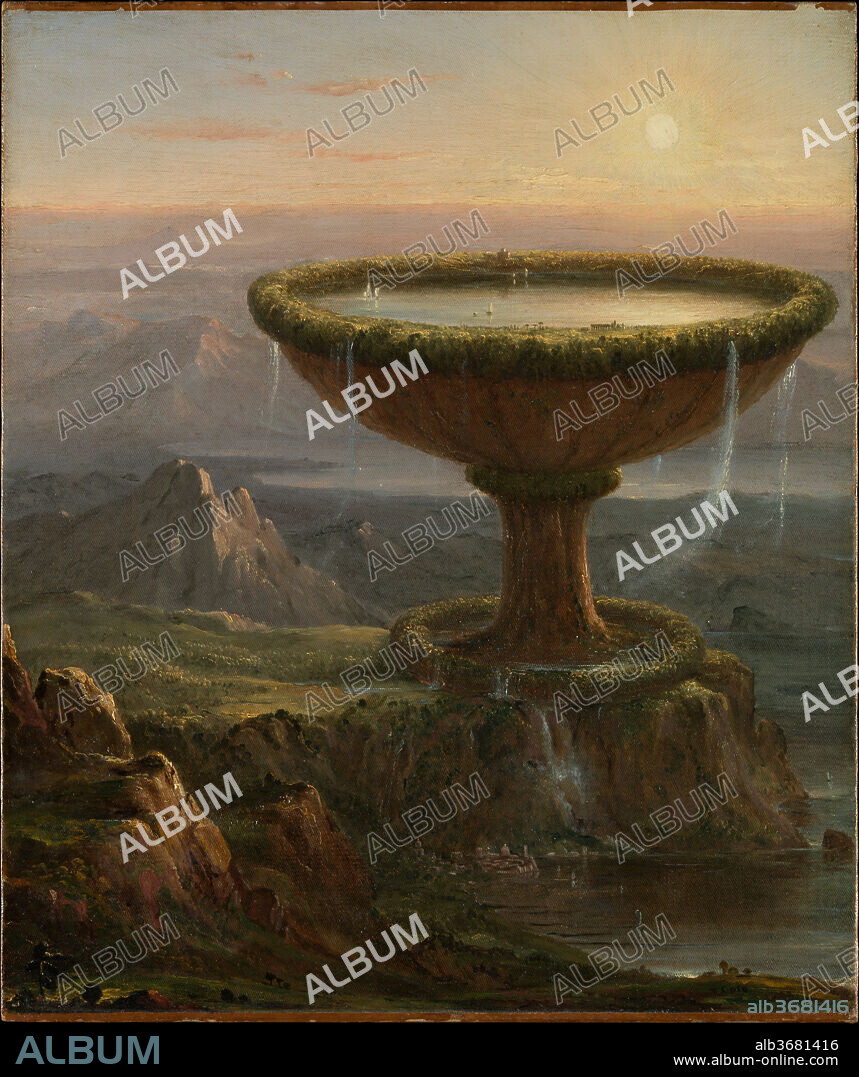alb3681416
THOMAS COLE. The Titan's Goblet

|
Añadir a otro lightbox |
|
Añadir a otro lightbox |



¿Ya tienes cuenta? Iniciar sesión
¿No tienes cuenta? Regístrate
Compra esta imagen.
Selecciona el uso:

Autor:
Título:
The Titan's Goblet
Descripción:
Ver traducción automática
The Titan's Goblet. Artist: Thomas Cole (American, Lancashire 1801-1848 Catskill, New York). Dimensions: 19 3/8 x 16 1/8 in. (49.2 x 41 cm). Date: 1833.
The culmination of Cole's romantic fantasies, this work echoes the artist's other works of the period in its Italian derived scenery and its attempt to illustrate themes dealing with the grandeur of the past, the passage of time, and the encroachment of nature. Rejected by Cole's patron, Luman Reed, and subsequently owned by the artist John M. Falconer, the work defies full explanation. The massive, vegetation encrusted goblet around whose rim are found classical ruins, and on whose glassy surface boats sail, has been linked to Norse legend and Greek mythology. Theophilus Stringfellow, Jr. described it as a self-contained, microcosmic human world in the midst of vast nature, while Falconer linked the monumental stem of the goblet to the trunk of the Norse world-tree; he likened the cup to "the ramifying branches . . . which spread out and hold between them an ocean dotted with sails, surrounded by dense forests and plains." Other theories tie the fantastic forms to J. M. W. Turner's "Ulysses Deriding Polyphemus" (National Gallery, London), to Italian architecture and geological formations, or to the golden goblet of the sun-god Helios. The elevation and remove of the cup, rimmed with classical remnants, suggests the disassociation of the present, embodied in the surrounding landscape, from the pinnacle of creation which nourished its culture. Cole serves as intermediary, a role open only to the artist or poet, transcending the strictues of the immediate world to unite past and present.
Técnica/material:
óleo sobre lienzo
Museo:
Metropolitan Museum of Art, New York, USA
Crédito:
Album / Metropolitan Museum of Art, NY
Autorizaciones:
Modelo: No - Propiedad: No
¿Preguntas relacionadas con los derechos?
¿Preguntas relacionadas con los derechos?
Tamaño imagen:
3443 x 4102 px | 40.4 MB
Tamaño impresión:
29.2 x 34.7 cm | 11.5 x 13.7 in (300 dpi)
 Pinterest
Pinterest Twitter
Twitter Facebook
Facebook Copiar enlace
Copiar enlace Email
Email
